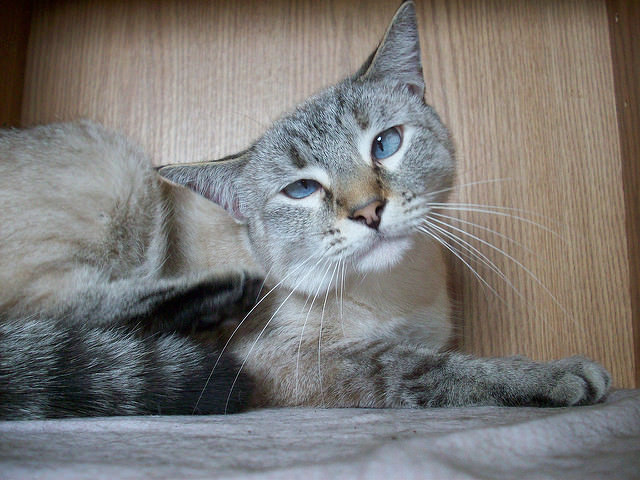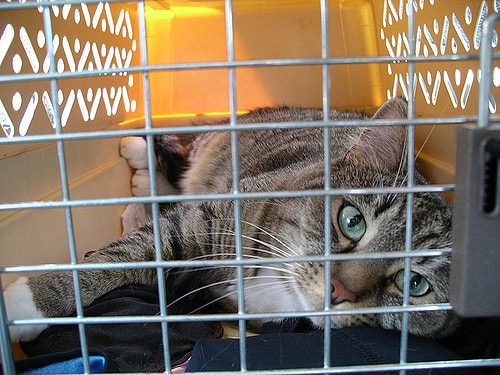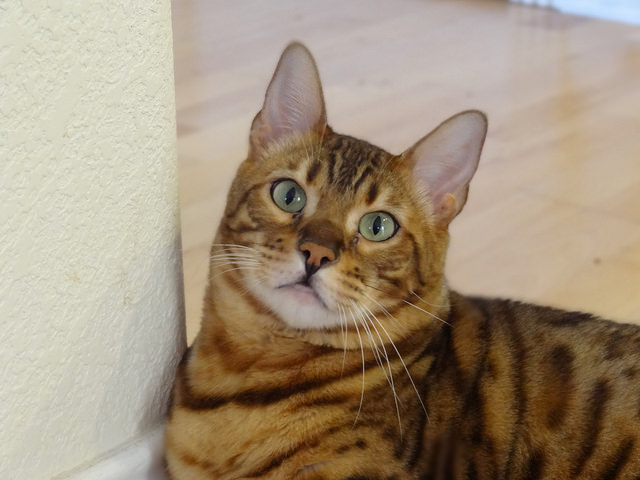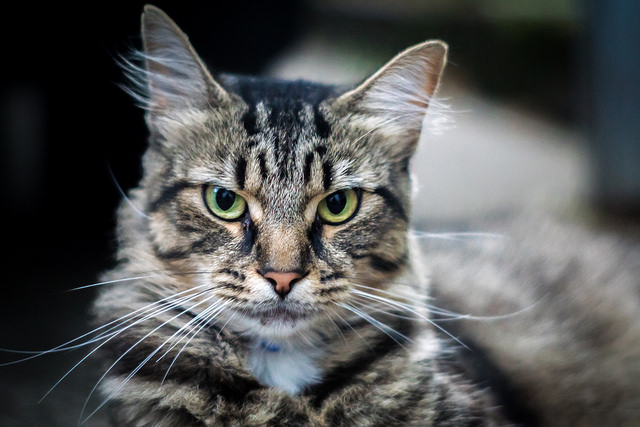If you’re reading this, I’d be willing to bet you think of your cat as a family member who you’d never put in harm’s way. You may be surprised to find out that quite a few common habits could be accidentally putting your cat at risk. Some of them are things you may even be doing to avoid a risk! The good news is that once you learn to view your home environment from your kitty’s perspective, it’s easier to create a safe and healthy home.

Image: Alisha Vargas : Flickr
#1 – Ignoring a flea problem
Most people don’t bother with monthly flea treatments for their indoor-only cats, and that’s okay! However, fleas are tricky little buggers and can sometimes find their way into your home either by squeezing through a small crack or hitchhiking on your sock. A single flea can lay up to 50 eggs per day, so you can see how this problems can get out of hand rather quickly if not dealt with. In addition to itchiness and irritation, fleas can carry diseases and tapeworms, and can cause anemia. Treat your cat and your home at the first sign of fleas.

Image: pjmorse : Flickr
#2 – Crate-free traveling
As highly territorial creatures of comfort, most cats aren’t fans of traveling. But sometimes a trip to the veterinarian or groomer is unavoidable. When a beloved cat is yowling in a crate, it can feel like the most compassionate option is to let her loose in the car where she can explore her surroundings untethered, or even sit in your lap. Unfortunately, this leaves your kitty in a dangerously vulnerable position if you have to slam on your brakes quickly. Not to mention what would happen if she wedged herself under your feet. The cries may be heartbreaking, but it’s ultimately safer to keep her in the crate.

Image: Pete : Flickr
#3 – Leaving windows open
If you have an indoor-only cat, it should be a no-brainer to not leave big gaping holes for your cat to slip through. But did you know that even screened windows can be unsafe? If a screen hasn’t been installed properly or isn’t secure, a cat could easily dislodge it. To keep your window-perching kitties safe, snap in some adjustable screens in front of your existing screens to create a double layer.

Image: Daniel Spiess : Flickr
#4 – Keeping poisonous plants in your home
The ASPCA has created two great lists: plants that are toxic to cats and plants that are non-toxic to cats. Given the dangers of poisonous plants (which can range from sickness to death), there’s simply no good reason to keep them in our home where a curious cat can take a nibble. Give your toxic plants to a petless friend and replace them with non-toxic version. Don’t forget to check the toxic list when you bring home a bouquet of flowers too! Some flowers, like lilies, can be fatal to your cat.

Image: Paul Longinidis : Flickr
#5 – Putting off veterinary visits
Lots of cat parents avoid vet visits except in the case of an emergency. Though your cat may appreciate less car rides, avoiding annual checkups isn’t the best option for keeping your cat safe and healthy. Cats are notorious for hiding pain and illnesses, so you may not even know she’s not feeling well until a problem is advanced and harder (or more expensive) to treat. Bringing your cat in for an annual exam will give your veterinarian a chance to see your cat objectively and compare her health and mobility to that of her previous visit, which may help discover a problem while it’s still minor.

Image: Michelle Tribe : Flickr
#6 – No collar or microchip
Cats are sneaky, curious, and can contort their bodies through amazingly small spaces, which can make them extraordinary escape artists. Without a collar or microchip, it’ll be much harder for your cat to find her way back home if she slips outside. Some collar tags, like the PetHub ID, will allow whoever finds her to access whatever information you choose to make available to them– which means you can let them know if she has any immediate health issues, needs a daily medication, etc., along with your contact information. If your cat has a microchip, be sure to keep it up to date with your current information.
